The New Forest in Hampshire and south-east Wiltshire is one of our most popular national parks, and it is easy to see why. People are drawn by its utterly distinctive landscape, dotted with free-ranging ponies and ancient trees, and its rolling heaths.
It has been welcoming a steady stream of admirers since Victorian times, when the railway was first built. The New Forest is more accessible than many of our parks, being close to the large population centres of Southampton, Bournemouth and Salisbury, and can be easily reached by train or bus as well as by car.
Its villages are well-equipped to cater for the summer influx of visitors with teashops and inns aplenty, there’s an abundance of car parks next to popular picnic spots, a good range of campsites and a well-organised network of cycle trails and footpaths. The forest is a great place for families, too – somewhere that children can reconnect with life’s simpler pleasures, such as paddling in a stream or building a den in the woods.
Our visitor's guide to the New Forest includes things to do, places to stay and eat, wildlife highlights, history and best walks, giving you all the information you need for a relaxing getaway to one of the UK's best national parks.
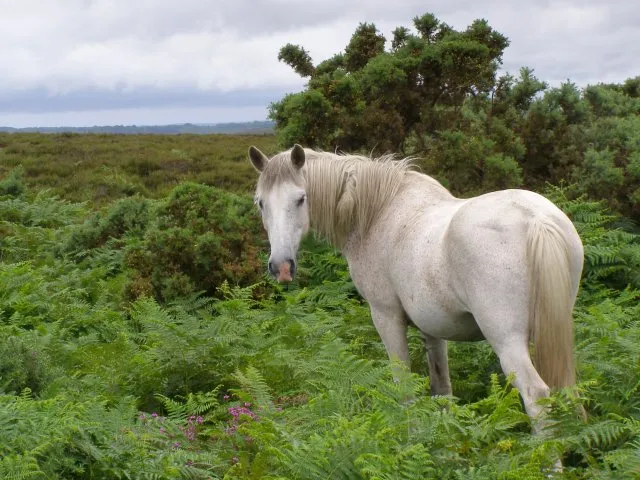
Visitor's guide to the New Forest
History of the New Forest
Human history in the area dates to Neolithic times, and there are still around 200 Bronze Age barrows to be found. Following the Norman conquest in the 11th century, the new rulers took power and did whatever they liked. And what they liked most of all was hunting. The New Forest was the first of many deer parks they established. Residents were prohibited from practicing agriculture, but their commoners’ rights were enshrined in the Charter of the Forest in 1217.
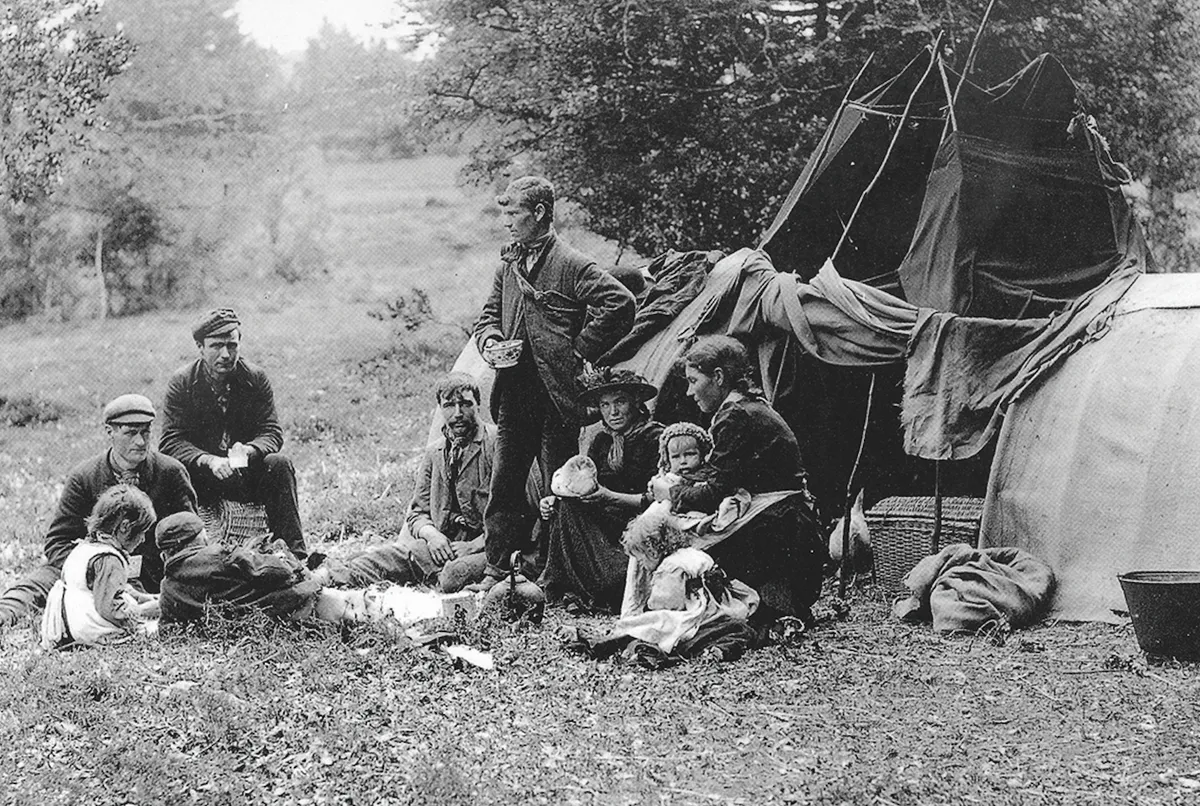
The following centuries saw the forest’s oaks become vital to the shipbuilding industry and the 20th century saw huge changes in the expulsion of the forest’s Gypsy population and the construction of wartime airfields and bombing ranges. In 2005, the New Forest was designated as a national park.
New Forest landscape and habitats
The unique landscape here is a reminder of what much of Britain would once have looked like. It is still a working common, in effect a huge unfenced communal farm, the largest area in the lowlands that escaped the depredations of the Inclosure Acts.
New Forest ponies are ubiquitous, as well as the commoners’ cattle, and pigs are let loose in autumn for pannage, hoovering up the year’s acorns. These rights of common are closely guarded, presided over by the Verderer’s Court in Lyndhurst which adjudicates on forest law, and overseen by a team of agisters who help manage the commoners’ stock, supervising the annual round-up known as the drift.
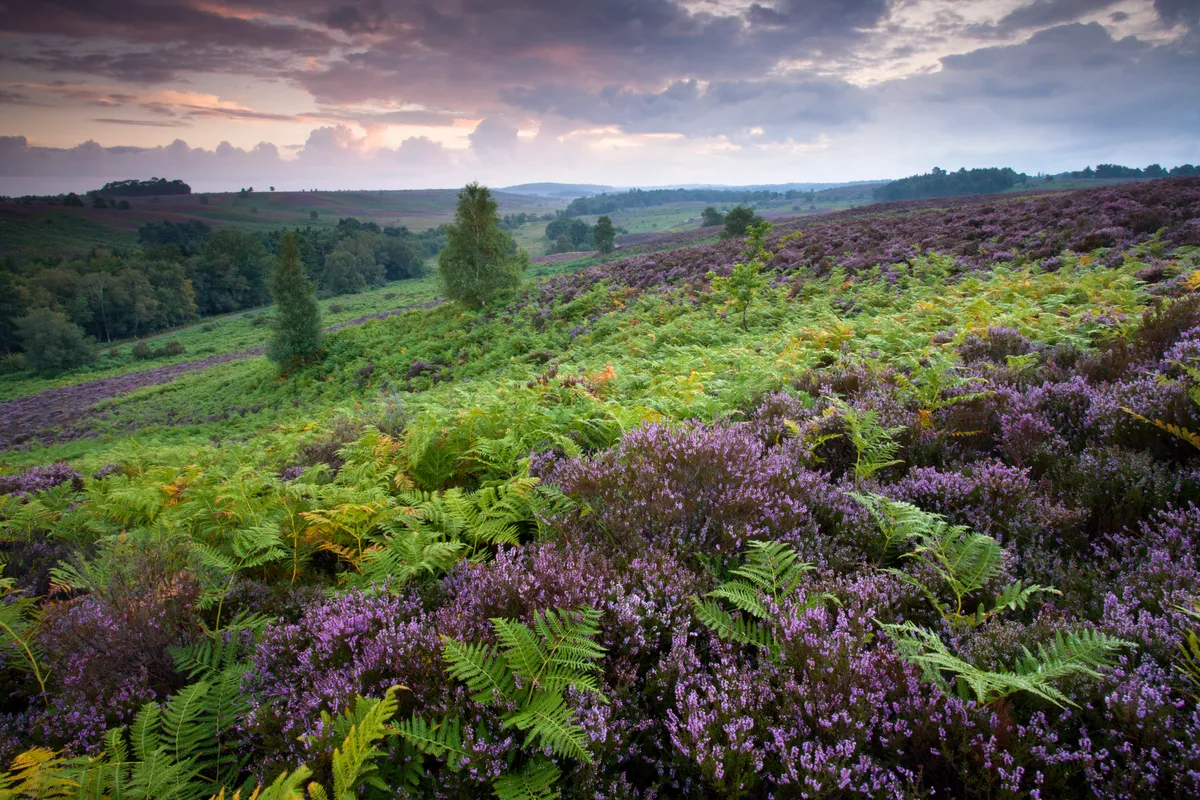
And yet for a working landscape, it is incredibly kind to the natural world. It is one of the richest habitats in Britain – if not in Europe – for flowering plants, fungi, lichens, insects, reptiles and birds. There are plants and animals here that have been almost entirely lost elsewhere. Indeed, there are some species found only here.
We are so accustomed to thinking of human use of the land as being inherently destructive of nature that it is somehow deeply reassuring to see that, actually, it can be possible for the two to exist in harmony. But it is a fine balance, and we need to recognise as visitors that this is a shared space and does not exist solely for our pleasure. We need to treat the place responsibly and not do anything that could jeopardise that fragile balance.
Is the New Forest actually a forest?
While there are Forestry Commission plantations, most of the woods here are pasture woodland, freely grazed by ponies, cattle and deer. These open woodlands of mostly mature oak and beech with an understorey of holly are utterly distinctive. They contain by far the largest concentration of ancient trees in western Europe and, being largely unmanaged, are filled with fallen trees and deadwood, an important factor in the richness of this habitat. Tidiness is not kind to wildlife. And continuity is a factor too; these woods have been like this since at least when the forest was founded 1,000 years ago, and likely for much longer still. That incredibly rich chain of connections between a multitude of species has never been broken.

Ancient trees in the New Forest
The long periods of preservation in the forest are perfectly embodied in the Knightwood Oak, the largest oak tree in the area, along the Bolderwood Ornamental Drive. It is a giant with a girth of 7.4m (24ft), and is at least 400 years old. That doesn’t make it the oldest in the forest – a yew tree in Brockenhurst Cemetery is thought to be 1,000 years old, pre-dating the formation of the Nova Foresta – and it doesn’t make it the tallest, which is a 55m (180ft) giant sequoia along Rhinefield Ornamental Drive. But the fact that it can grow large and a little skew-whiff and bulging and ugly for so long is a healthy sign of continuity in this ancient land.
New Forest heath
The first-time visitor may be surprised to find, however, that only about half of the New Forest is actually wooded. Most of the rest is lowland heath, great expanses of heather dotted with gorse brakes, a rare and declining habitat both nationally and globally. In the south of the forest, the heaths are flat; the great expanse of Beaulieu Heath was once used as an airfield, while further north the topography becomes more varied, from the rolling heather slopes west of Brockenhurst to the high ridges of the north of the forest such as in the vicinity of Godshill.
New Forest wildlife
Rare birds
The forest holds the largest area of lowland heath that still remains, and is home to some elusive species of bird, such as the Dartford warbler, the woodlark and nightjar, as well as to all of our species of reptile, including the exceedingly rare sand lizard and smooth snake.
In early summer, go to where the woods meet the heath at sunset, and listen for the strange mechanical churring of the nightjar; you may see one gracefully swooping in the half-light in its hunt for moths. The woodlark, a rare heathland bird, is small and unassuming. Then it starts to sing, a song held by some to be the most beautiful of all.
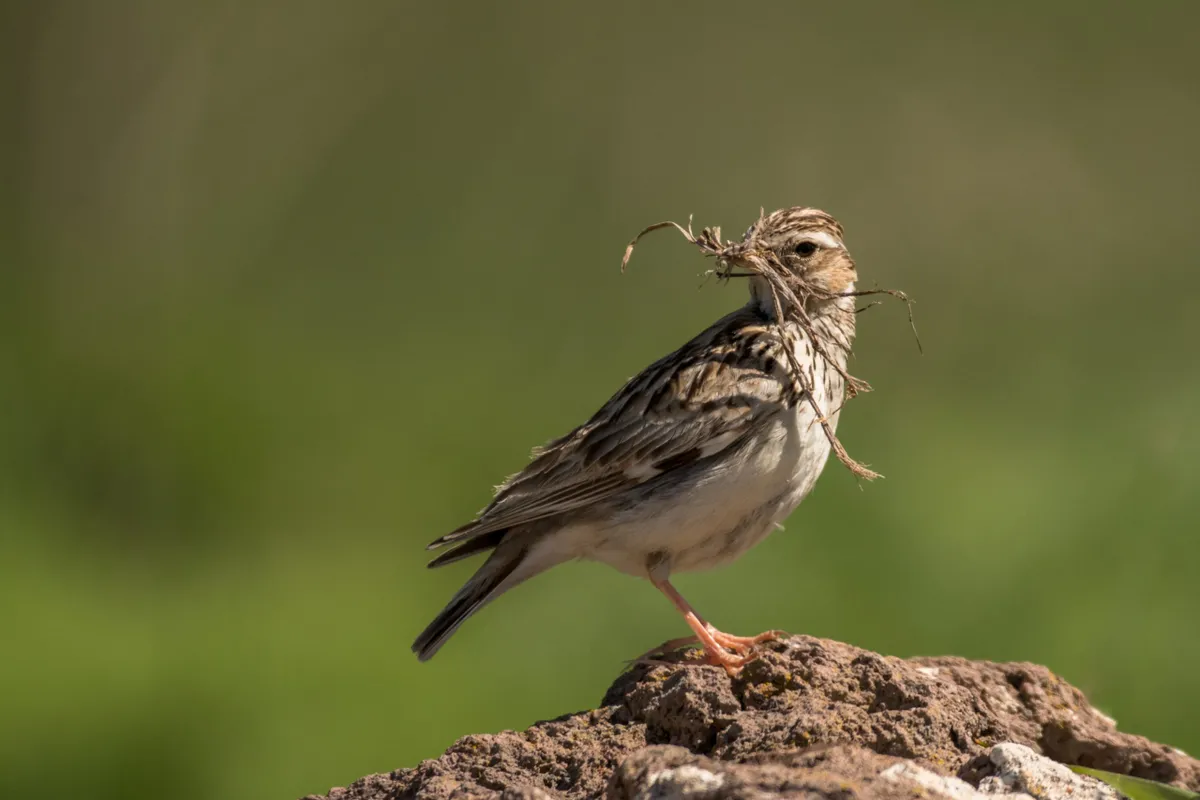
Orchids and heather
At this time of year, the heath is dotted with beautiful heath spotted-orchids and then, in August, the heather comes into full bloom and swathes the rolling hills with a purple haze. Keep your eyes to the sky, too; the forest is home to an extraordinarily wide range of birds of prey, including scarce summer visitors, the elusive honey buzzard and the impossibly graceful hobby.
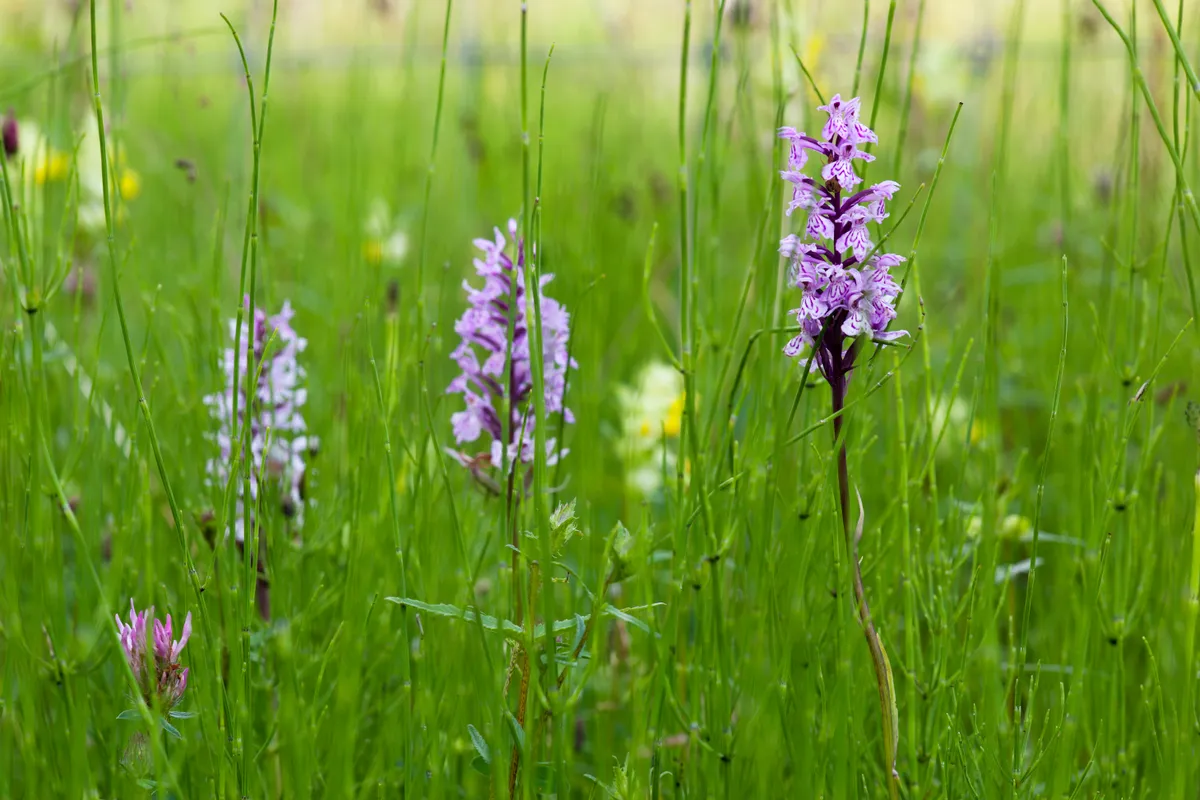
Butterflies
In July, where the heather is at its tallest, you may come upon a colony of beautiful silver-studded blue butterflies. These are rare in the UK but abundant in the forest, and you may see hundreds.
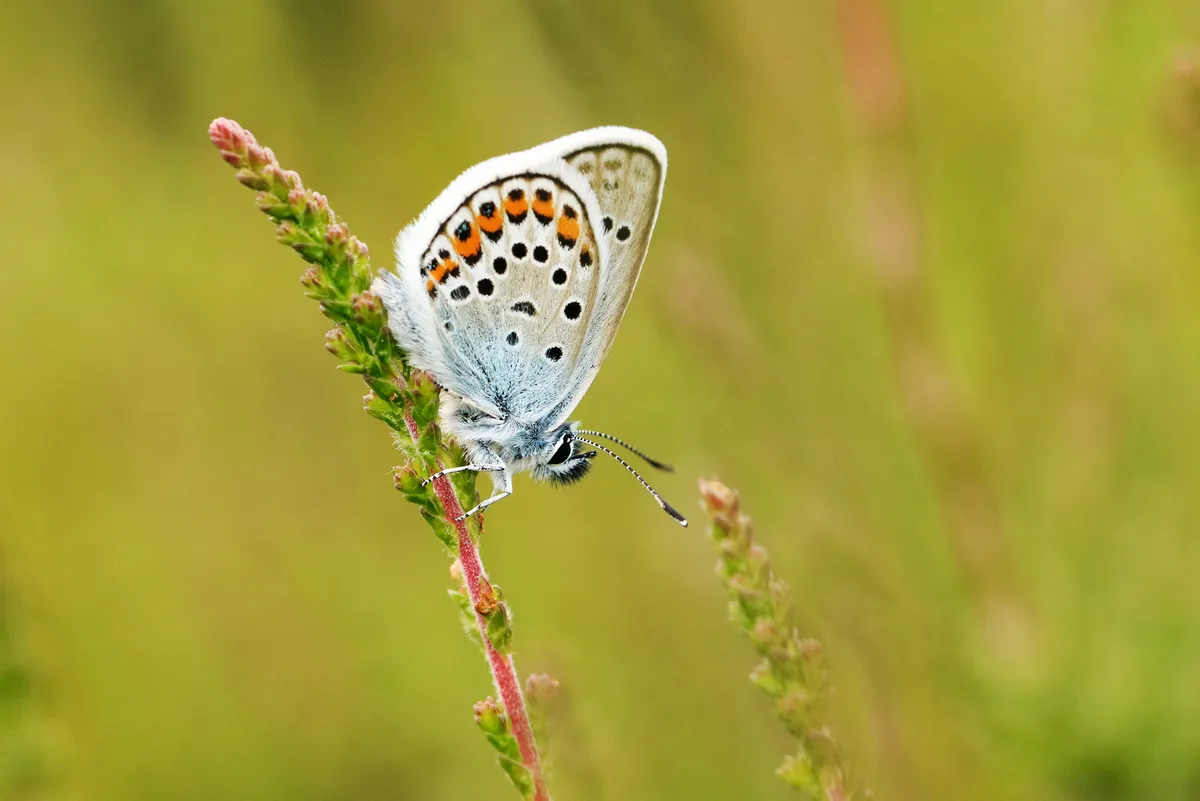
Deer
There are five species of deer in the forest, but you’re most likely to see roe deer in the woods and fallows on open ground. A small number of fallow deer are pure white, always a special sight. To see avocets, head to marshes at Keyhaven and Pennington.
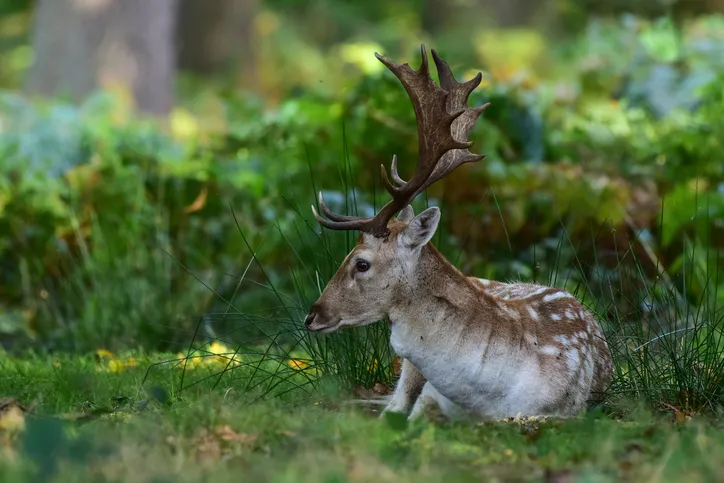
Waders
Where water gathers between the low hills, valley mires have formed; these almost impenetrable bogs add a touch of genuine wildness to an otherwise well-trodden landscape. These are a hugely valuable habitat and vanishingly rare; there are only 120 valley mires in western Europe, and 90 of them are in the New Forest. They are a gift to breeding waders in the midst of a steep population decline, to specialised bog-flowers such as the carnivorous sundews, and to rare insects. Sit beside one and you may be lucky enough to hear the insistent call of a lapwing or the plaintive trill of a curlew, sounds that have now been lost to most of England.
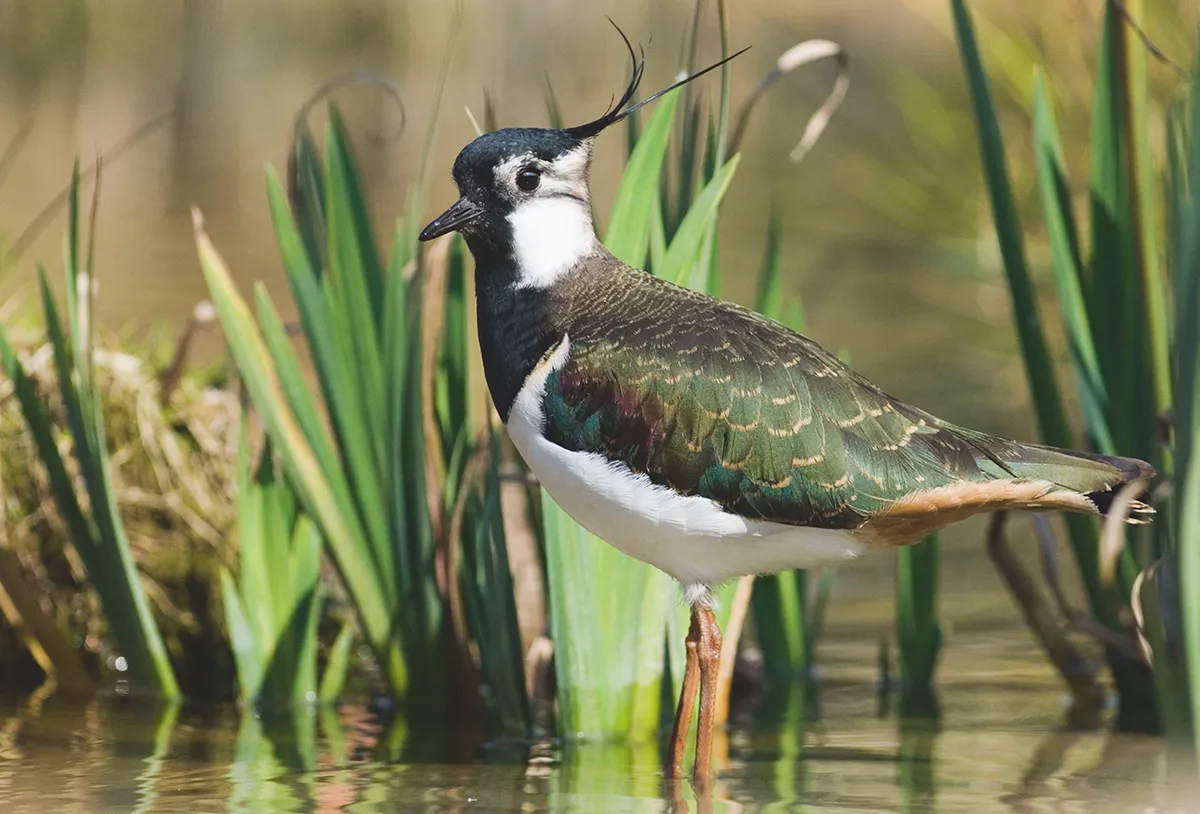
Dragonflies and damselflies
Summer is the season for dragonflies and damselflies; three-quarters of British species can be spotted here, including some unlikely to be seen anywhere else. The mire at Hincheslea Bog between Brockenhurst and Sway is crossed by a causeway, so you can get an idea of what it looks like to be in the middle of one, rather than on the outside.
Mosses and lichens
From one of the many little wooden bridges crossing the forest’s waterways, perhaps at the upper reaches of Highland Water or Bartley Water, follow a stream as it winds its way into the woods. Sit on the roots of an old oak at the water’s edge and watch over the never-ending flow of the stream. If you wait long enough, a kingfisher will zip by in a flash of colour.
Slow yourself down, listen to the birdsong and take in the atmosphere. Focus your attention. Consider the moss beneath your feet and the lichen crusting the branches. Place your hand on the trunk of the old oak and reflect that it has been there since long before you were born, and will still be there long after you have gone.
New Forest through the seasons
The forest is at its busiest during the summer months and on bank holidays; it’s worth paying a visit when it’s quieter. The forest is perhaps at its most beautiful in the autumn, when the leaves are turning and the forest floor is ripe with mushrooms. Over 2,000 species of fungi have been recorded here, with more being found all the time. In winter, when the heaths can appear bleak, perhaps try a trip to the coast and visit Lepe Beach.
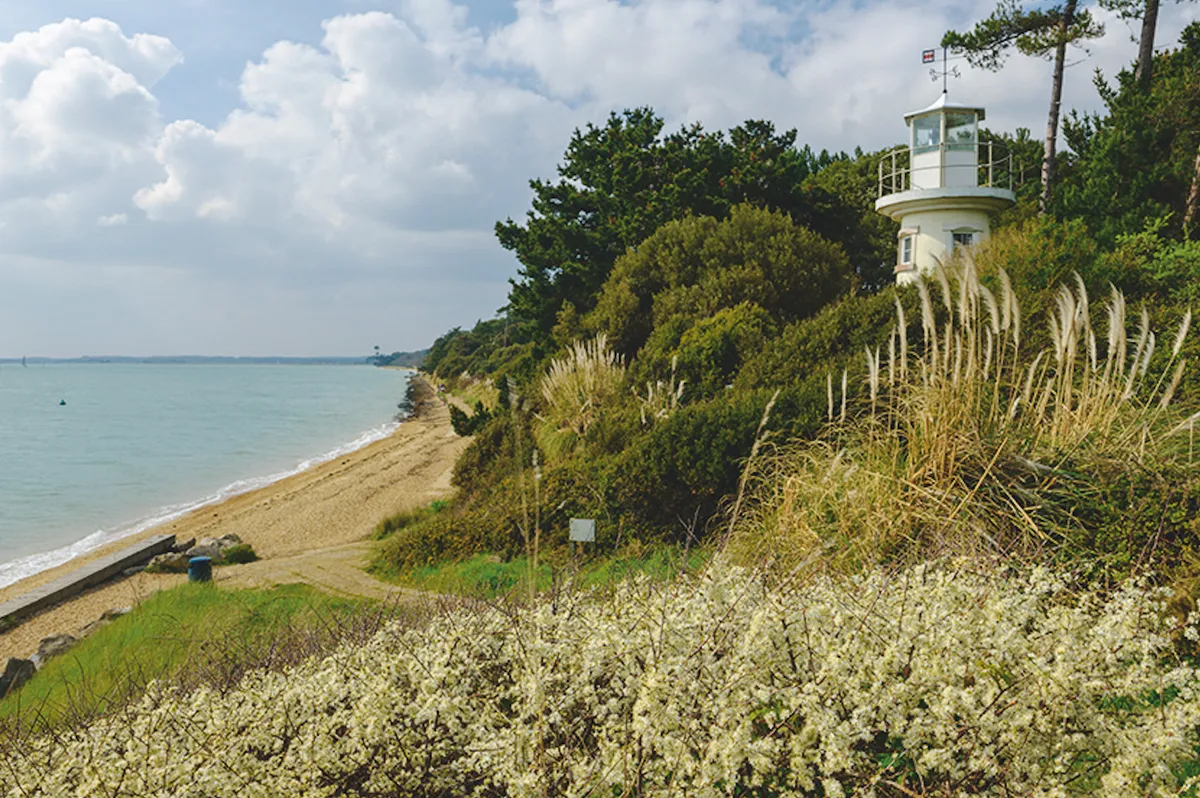
Walk the seawall between Lymington and Keyhaven, part of the Solent Way long-distance footpath, for fine views over to the Isle Wight. The nature reserve attracts huge numbers of winter wildfowl and waders, as well as smaller numbers of beauties such as the avocet and spoonbill. If you’re there as the tide is turning, a torrent of birds may flow overhead, passing between the mudflats and the saltmarsh.
New Forest towns and villages
Lymington
Lyndhurst may be the National Park’s capital, but Lymington, which lies on the south coast facing the Isle of Wight across the Solent, is by far the largest town as well as a major yachting centre. In keeping with its nautical status, it has a busy high street peppered with the odd salty boutique, cafe and restaurant. It’s also a useful base from which to explore the south of the Forest and the Solent coastline between Keyhaven and Calshot, as well as the tidal reaches of the beautiful Beaulieu River.
Buckler’s Hard
Opposite Exbury on the river is Buckler’s Hard, a former 18th-century shipbuilding village that constructed vessels for Nelson’s navy and is now home to an excellent maritime museum.
Beaulieu
Further up the river is its eponymous village, Beaulieu, where there is an amazing motor museum, the remains of a Cistercian abbey and a historic house. A single ticket gives access to them all.
Where to eat and drink in the New Forest
The Royal Oak, Fritham
Serving cask ale and locally sourced produce, this traditional pub has just been declared country pub of the year in The Good Pub Guide 2021. royaloakfritham.co.uk
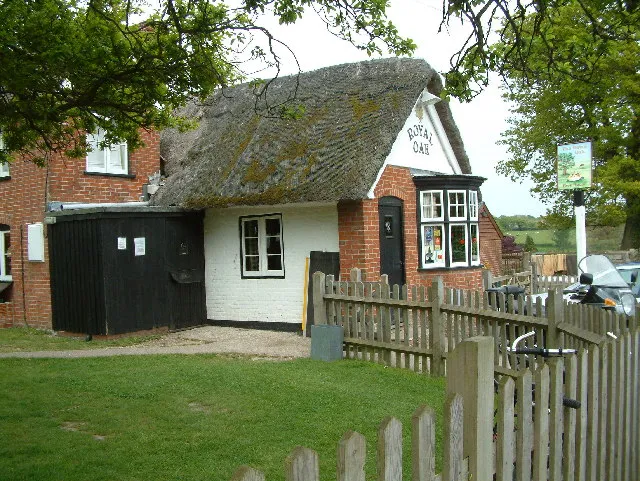
The Station House
A refreshing take on the tearoom, the Station House is where the A35 crosses the old railway line (now a cycle trail) from Brockenhurst to Ringwood. Great meals and cakes, proper pots of tea, coffees, local bottled ales and more are available. Station Road, Holmsley, Burley BH24 4HY
01425 402468 stationhouseholmsley.com
The Crown Hotel, Lyndhurst
This 15th-century manor house with a pretty garden serves locally sourced food of a gourmet standard. crownhotel-lyndhurst.co.uk
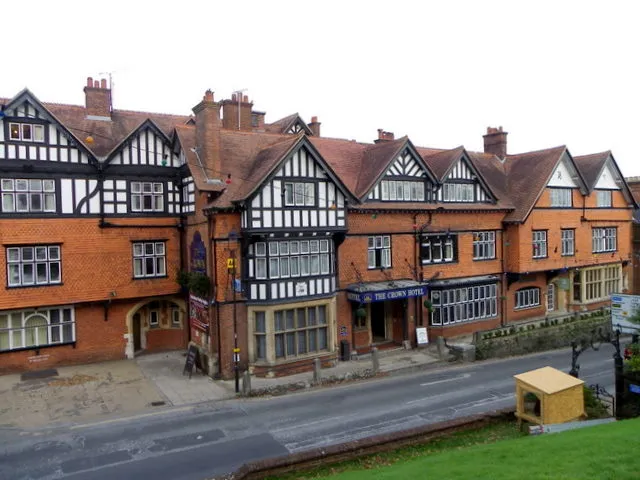
Monty’s Inn, Beaulieu
Monty’s is owned by, and next to, the elegant Montagu Arms Hotel (which has a Michelin Star). The Inn itself is quaint and relaxed, with log fires and a family friendly. 01590 614986
montaguarmshotel.co.uk
Things to do in the New Forest
Giant tree hunt
If you have a few days in the forest and want an adventure, why not try to see how many of the forest’s giants – the most massive and ancient trees – you can track down. Here is a guide, complete with grid references. newforestexplorersguide.co.uk
New Forest Reptile Centre, Lyndhurst
The reptiles of the forest are elusive and hard to spot, but you can see them all at this conservation centre, due to reopen this summer. forestryengland.uk/new-forest-reptile-centre
Bolderwood Deer Sanctuary
A herd of wild fallow deer has become used to supplementary feeding here, April to September. You are almost guaranteed good views from the viewing platform. new-forest-national-park.com/bolderwood-deer-sanctuary.html
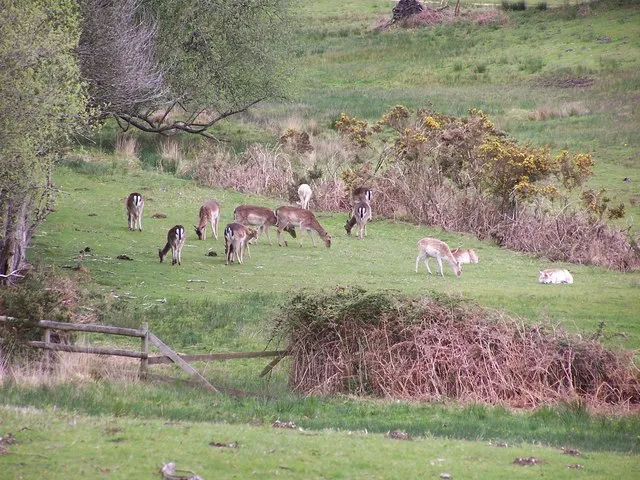
The National Motor Museum, Beaulieu
A world-class attraction with more than 250 vehicles from land speed record breakers to Formula One racers. The ticket gets you into the World of Top Gear, Palace House, The Secret Army exhibition and the Abbey. 01590 612345 beaulieu.co.uk
Walking in the New Forest
Hampton Ridge/Pitts Wood walk
From Frogham, walk up on to Hampton Ridge, a high gravel ridge that offers some of the most spectacular big-sky views in the forest. The route passes Ashley Walk bombing range, where you can spot structures that are relics from the Second World War. Return via lovely Pitts Wood.
Acres Down Woodland walk
Acres Down, near Minstead, is a great mix of woodland and open ground and a known hotspot for rare birds of prey, including goshawks and honey buzzards. There is the option of a three-mile circular walk on a well-made gravel path, suitable for those with buggies or wheelchairs and for when the ground elsewhere is just too boggy.
Guided walks
If you’d like extra help for your explorations of the forest’s nature, then Wild New Forest organises guided walks with experienced local naturalists; from £10 per adult. wildnewforest.co.uk
The Solent Way
Lyndhurst may be the National Park’s capital, but Lymington, which lies on the south coast facing the Isle of Wight across the Solent, is by far the largest town as well as a major yachting centre. In keeping with its nautical status, it has a busy high street peppered with the odd salty boutique, cafe and restaurant. It’s also a useful base from which to explore the south of the Forest and the Solent coastline between Keyhaven and Calshot, as well as the tidal reaches of the beautiful Beaulieu River.
One of the best ways to explore the coast is by walking the Solent Way, a 60-mile footpath from Milford on Sea east to Emsworth Harbour. For much of its length, the path follows the coast.
Discover more walks in the national park with our guide to best walks in the New Forest.
Where to stay in the New Forest
Camping – budget
Around the fringes of the New Forest, there’s a wide choice of campsites, from basic to luxurious. There are 10 campsites in the open forest itself, some of which have no services and are aimed more towards owners of mobile homes, but there are four campsites for tented camping. Ocknell has a particularly fine location; from £13.95 a night. Book all 10 sites through campingintheforest.co.uk/england/new-forest
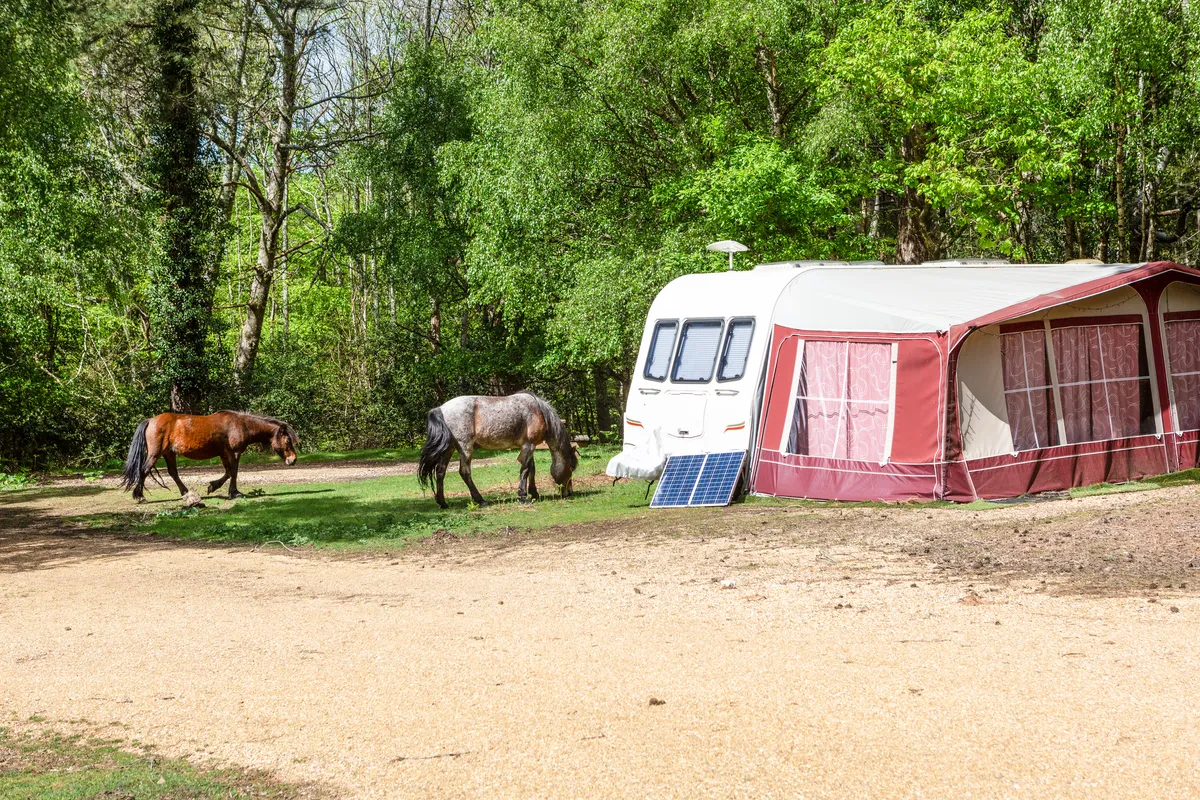
Beaulieu Inn – mid-range
There are many modestly priced hotels to choose from, especially in the larger villages. Right by Beaulieu Road station, Beaulieu Inn is accessible but otherwise isolated on the open heath, with the stylish The Drift pub just next door. Double rooms from £120. beaulieuinn.newforesthotels.co.uk
The Lime Wood Hotel – high-end
If your tastes veer more towards the luxurious, there are plenty of five-star hotels to choose from. The Lime Wood near Lyndhurst even has a helipad – always useful, I find, for when I want to arrive in style. Double rooms from £395 per night. limewoodhotel.co.uk
How to get around the New Forest
Remember that a car is not vital to visit the forest. There are several railway stations serving the area, plus regular buses. In summer there are hop-on hop-off tourist buses: thenewforest.co.uk/things-to-do/activities/bus-tours.
You can hire bikes in the larger villages, such as Brockenhurst and Lyndhurst. If you want to explore the fantastic cycle network, find out more at thenewforest.co.uk/things-to-do/cycling.
Getting to the New Forest
The New Forest is just 90 miles from London, via the M3 then M27 – leave at J1 for either Lyndhurst and the south (A337) or Fritham and the north (B3078). From Birmingham take the M40 to J9, then A34 to Winchester to join the M3.
There are trains from London to Brockenhurst (1.5 hours), a direct train from Manchester (4.5 hours) and Birmingham (3 hours).
There are regular bus services to Lyndhurst from Southampton and to Ringwood from Bournemouth and Salisbury. Open-top bus tours run in the high season.
Why not treat yourself to a stylish new weekend bag for your trip? We've reviewed a selection of top brands to find our favourites.
